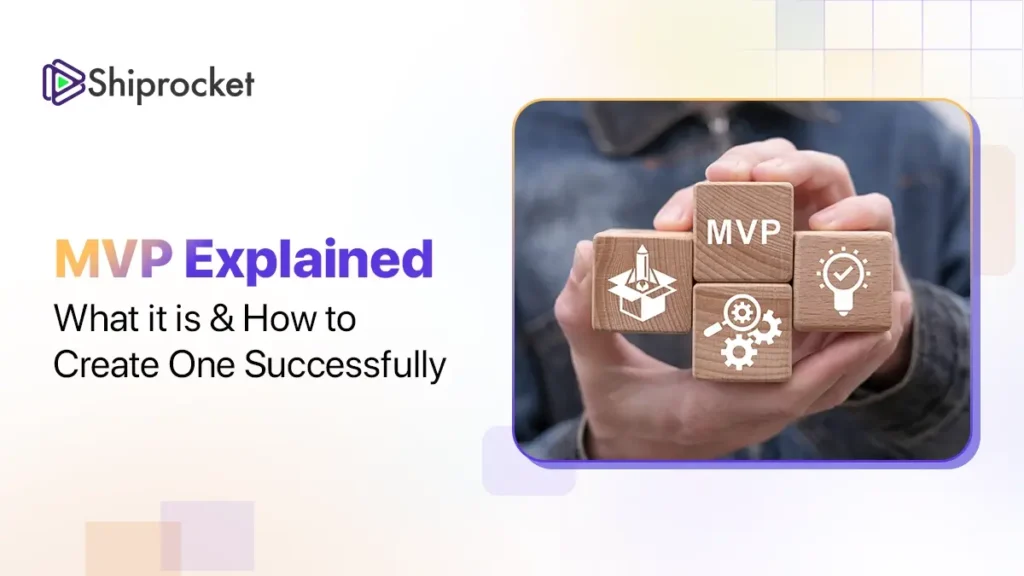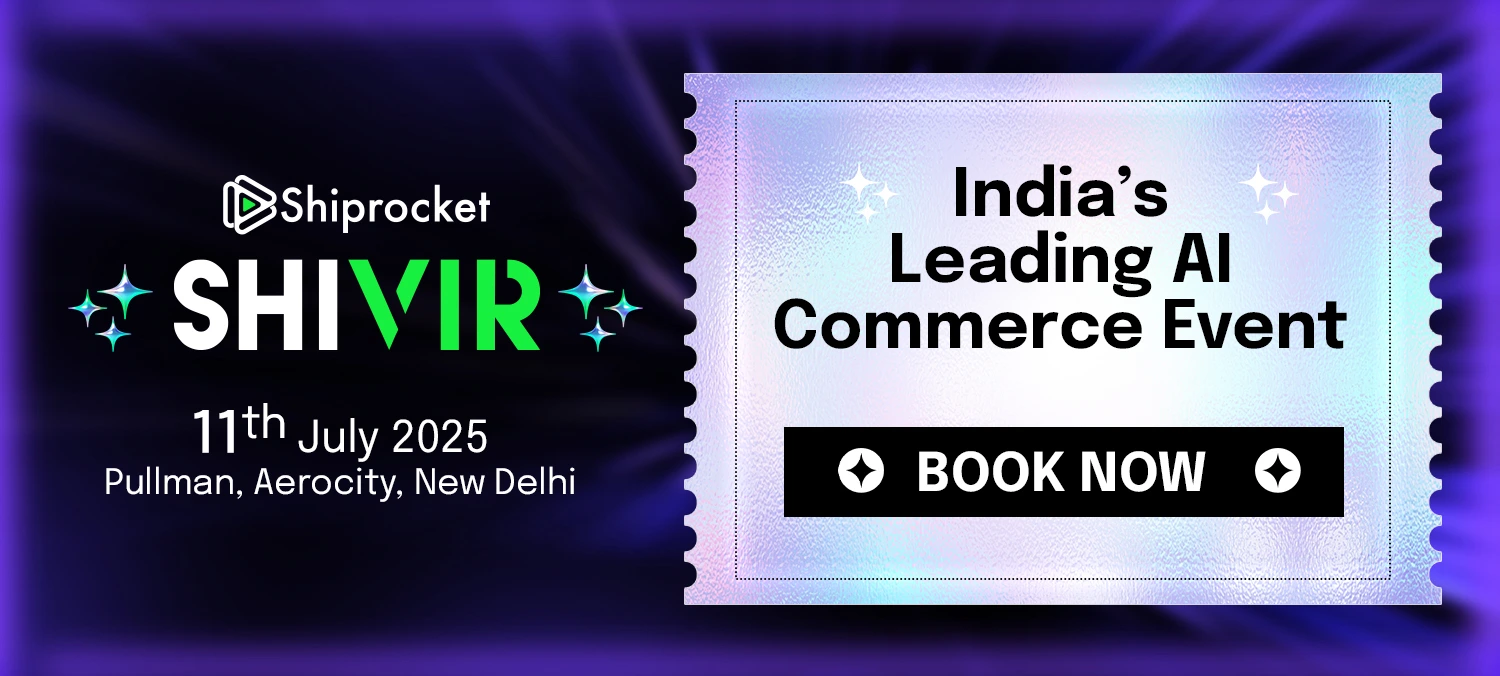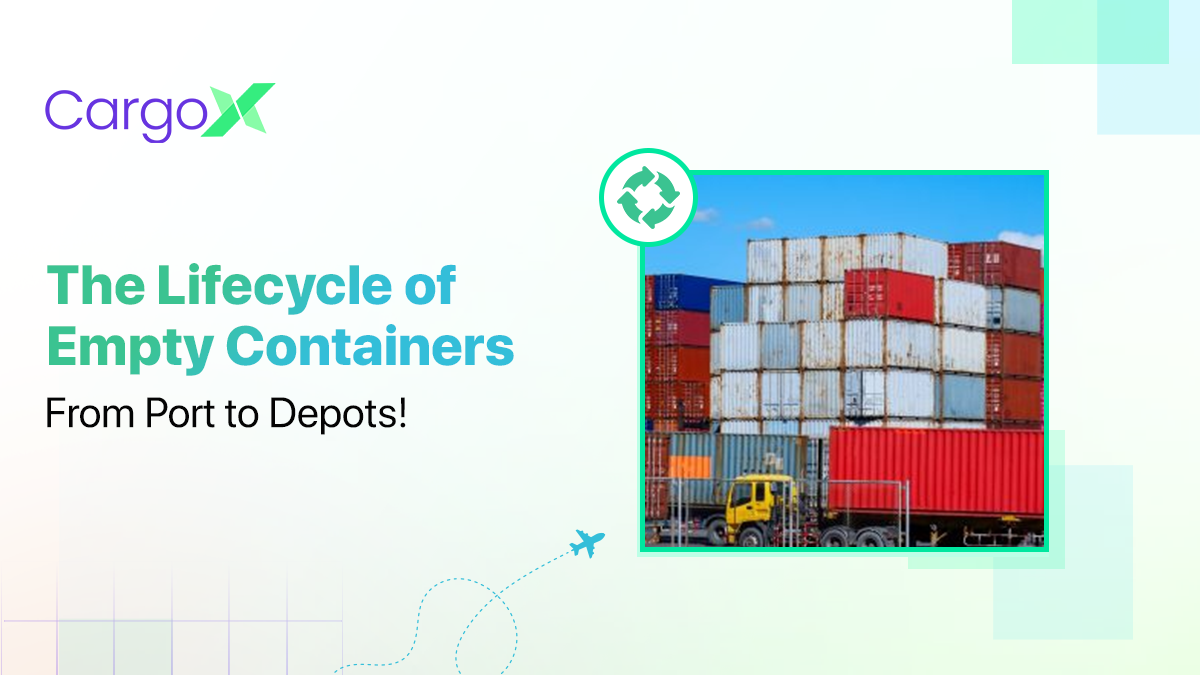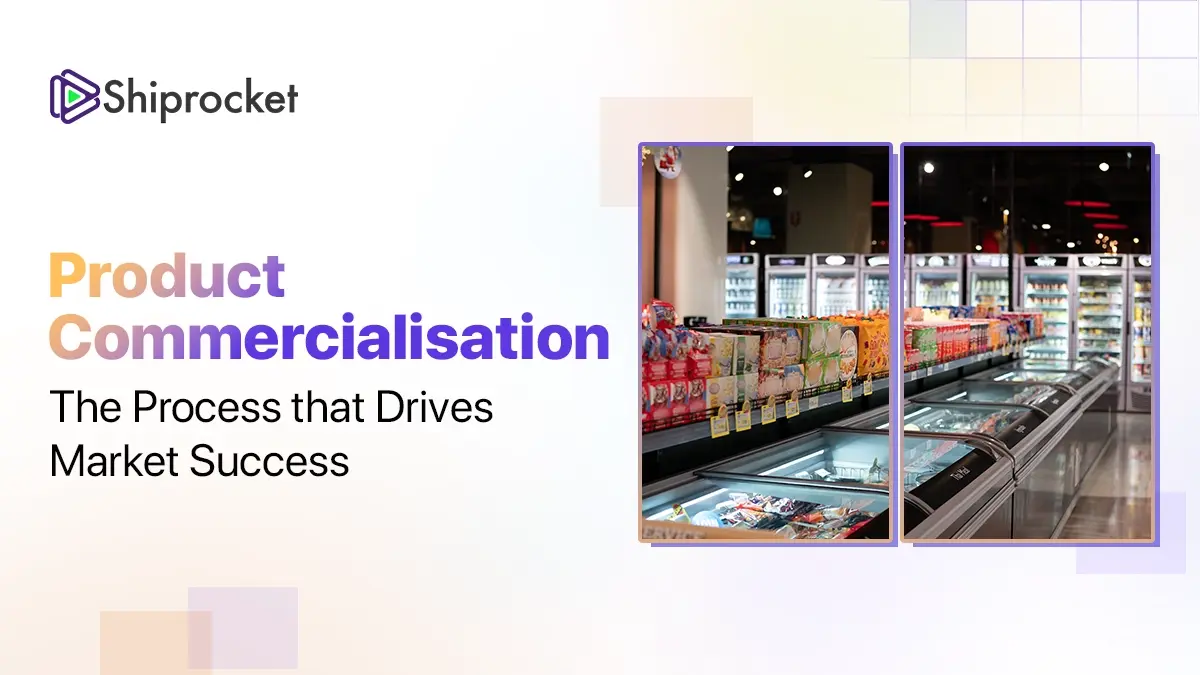Minimum Viable Product (MVP): Definition & Step-by-Step Guide
Launching a new product is exciting, but it comes with a big challenge – what if no one wants your product? Often businesses spend months (or sometimes even years) building a product only to realise there’s no demand, which can be a costly mistake. A minimum viable product (MVP) can help you save time, money, and effort. Instead of guessing what your potential customers want, an MVP lets you test your idea with a basic version of your product. You get real feedback, make improvements, and build something people actually need.
This blog will explore what an MVP is, why it’s important, and how to create one the right way.

MVPs: The Basics You Need to Know
The concept of minimum viable product (MVP) was introduced by Eric Ries in his book ‘The Lean Startup’.
An MVP is a version of a new product you’re designing with just enough features to be usable by early customers. It allows your product development team to gather feedback and validate the product idea with minimal effort and resources. According to a survey, 87.9% of participants agree that an MVP helps validate a business idea, while 81.6% believe it effectively tests feasibility before committing significant resources. MVPs focus on core features that are essential for the product to be viable and address a specific customer need.
The primary goal of an MVP is to test a business idea and gather valuable feedback from early users before investing heavily in a full-fledged product. However, it’s important to note that an MVP is not a prototype but rather a version of the product that is ready for users to use, interact with, and provide feedback.
How MVPs Help You Build Better Products Faster
Businesses recognise the value of testing their ideas early. In fact, about 91.3% of businesses have already launched a product using the MVP approach, while 74.1% plan to do so in the future.
Here’s how MVPs can help you build a better product faster.
1. Validation and Reduced Risk
MVPs allow your business to test its core product assumptions with minimal investment of time and resources. Launching a basic version of the product can help you gather real-time feedback from users, identify potential issues, and make informed decisions about future development. Identifying and addressing problems early on through an MVP approach can significantly reduce the cost of developing a fully featured product that may not meet user needs.
2. Focus on Core Functionality
MVPs are designed to be iterative, encouraging you to focus on the most important features that solve the core problem for users. They help you avoid feature bloat and unnecessary complexity and can be continuously improved and refined based on user feedback and data. The MVP approach aligns well with agile methodologies, allowing for rapid product development cycles and frequent releases.
3. Faster Time to Market
Focusing on core functionality and using an iterative approach with MVPs can allow your business to get its product to market faster. On average, using an MVP can reduce time to market by 25%, helping businesses gain early traction and adapt faster to customer needs. Early users can provide valuable feedback that can be used to improve the product and build a stronger foundation for future development. MVPs can also help you validate your product concept and ensure that you’re building something that users actually want.
4. Enhanced User Experience
MVPs encourage a user-centric approach to product development, ensuring that the product is designed to meet the needs of real users. Gathering data from user interactions with the MVP can help you make data-driven decisions about future development and improvements. MVPs’ iterative nature ensures continuous improvement and refinement of the product based on user feedback and data.
In addition to the benefits above, MVPs can also help you save costs and attract investors. As compared to building a full-scale product from the start, MVPs can reduce product development costs. Businesses consider MVP as a tool to showcase potential, gain investor confidence, and secure funding even before full-scale development begins.
Steps to Build an MVP That Works
Here’s a detailed breakdown of steps to build an effective MVP.
- Identify the Problem: Clearly define the problem your product aims to solve and the target audience who experiences it.
- Conduct Market Research: Understand your target audience’s needs, pain points, and behaviours through research and interviews.
- Validate Your Assumptions: Test your assumptions about the problem and solution with potential users early on.
- Define & Prioritise Core Features: Identify and focus on the minimum set of features necessary to deliver the core value proposition and address the primary user need, which can be built quickly.
- Development Rapidly: Prioritise speed and efficiency in building your MVP, focusing on a functional, testable version rather than a polished final product.
- User Testing & Improvement: Get feedback from early adopters and real users to identify areas for improvement, refine your MVP based on data-driven insights, and ensure the MVP meets their needs.
Now, let’s explore some points you should remember while building an MVP.
- Don’t Over-Engineer: Avoid building features that are not essential to the core value proposition or testing your hypothesis.
- Focus on User Experience: Ensure the MVP is user-friendly and provides a positive experience, even with limited features.
- Track Key Metrics: Monitor relevant metrics to measure the success of your MVP and identify areas for improvement.
- Be Prepared to Pivot: If the MVP fails to meet user needs or validate your assumptions, be prepared to pivot and adjust your approach.
- Document Everything: Keep a clear record of your MVP’s development process, user feedback, and iterations to inform future product development.
Famous MVPs That Started Small & Grew Big
Some of the biggest companies today started with just a simple MVP. Instead of launching a fully developed product, they tested their ideas with a basic version, gathered feedback, and improved over time. Here are some of the most famous examples of MVPs that turned into billion-dollar businesses.
- Airbnb: Brian Chesky and Joe Gebbia started Airbnb in 2007 by renting out air mattresses in their apartment to attendees of a design conference. They built a simple website to list their space and validated the demand for short-term, affordable stays. That small experiment led to a global hospitality giant.
- Dropbox: Dropbox didn’t start with a working product. Instead, the founders created a short explainer video demonstrating how their file-sharing service would work. The video attracted thousands of sign-ups, proving market demand before any coding began.
- Uber: Originally called ‘UberCab’, Uber’s MVP allowed users in San Francisco to book black car services through a basic app. The goal was simple to test whether people wanted a more convenient way to get rides. The response was overwhelming, leading to what users now know as Uber.
- Instagram: Instagram began as an app called ‘Burbn’, which had multiple features, including check-ins and photo-sharing. The founders noticed users were mostly interested in posting pictures, so they stripped everything else away and focused on photography. That pivot turned Instagram into the social media giant it is today.
- Zappos: Founder Nick Swinmurn wanted to see if people would buy shoes online before investing in inventory. He built a basic website, took photos of shoes from local stores, and listed them online. When people placed orders, he bought the shoes himself and shipped them. That simple MVP validated the concept, and Zappos became a leading online shoe retailer.
- Spotify: Spotify started as an invitation-only beta version, allowing a small group of users to test its music streaming service. This helped refine the platform while creating hype and demand before a wider release.
- Twitter (Now X): Twitter began as an internal communication tool for employees at Odeo, a podcasting company. The MVP allowed users to post short status updates, which quickly caught on. Seeing its potential, the team pivoted, and Twitter became a major social media platform.
- LinkedIn: LinkedIn’s MVP focused only on user profiles and a search function to help professionals connect. Even in its simplest form, it attracted users, proving the need for an online professional network.
Moving Beyond MVP: Taking Your Product to the Next Level
Moving beyond the MVP phase means refining your product, enhancing user experience, and ensuring it can grow sustainably. Here’s how you can take your product to the next level.
Collect and Analyse User Feedback
Your early adopters provide the most valuable insights. Gather feedback through surveys, interviews, and analytics tools. Identify pain points, missing features, and areas that need improvement. Prioritise feedback that aligns with your product goals and has the most impact on user experience.
Improve Core Features Before Expanding
Instead of adding multiple new features, enhance the existing ones. Optimise usability, fix bugs, and improve performance. A well-polished core product builds trust and increases user retention.
Focus on Scalability
As your user base grows, your product must handle increased demand. Optimise infrastructure, enhance server capabilities, and ensure smooth performance. A scalable architecture prevents downtime and ensures a seamless experience for users.
Develop a Product Roadmap
A clear roadmap helps align your team and prioritise development efforts. Define short-term and long-term goals, set milestones, and ensure your team is working toward a common vision. Keep the roadmap flexible to adapt to market trends and customer needs.
Iterate and Test Continuously
Regular testing ensures new updates improve the product without introducing issues. Conduct A/B testing, monitor user behaviour, and analyse data to refine your offering. Continuous iteration keeps the product relevant and competitive.
Strengthen Your Go-To-Market Strategy
As your product evolves, so should your marketing and sales strategies. Identify new customer segments, refine your pricing model, and explore additional distribution channels. Effective positioning helps attract more users and drive growth.
Leverage Technology for Innovation
Incorporate AI, automation, or data analytics to enhance product capabilities. Emerging technologies can streamline operations, personalise user experiences, and improve decision-making. This can give you a competitive edge in the market.
How Shiprocket Helps Businesses Scale Beyond Their MVP
Shiprocket is offering technology-driven products and solutions to simplify both domestic and international shipping. Our comprehensive platform is tailored for eCommerce businesses, helping them streamline their shipping process, reduce costs, and enhance customer satisfaction.
We help businesses scale beyond their minimum viable products by offering a suite of services designed to streamline operations and drive growth. We connect businesses with multiple shipping partners and ensure timely deliveries at the best rates, meeting modern customer expectations for reliability and speed. This enables growing businesses to expand their reach to new geographies, even across borders, without the stress of managing logistics internally.
Moreover, solutions like real-time tracking, automated shipping, hyperlocal deliveries, personalised marketing solutions, financial support, advanced analytics, and cross-border solutions help SMEs move beyond MVPs by providing the tools needed to optimise operations and improve customer experience. We enable businesses to focus on product innovation and expansion while handling the complexities of logistics, making us an indispensable growth partner for scaling sustainably.
Conclusion
An MVP is a strategic tool for learning and adapting for businesses. By focusing on the most important features, launching quickly, and learning from real users, you set yourself up for long-term success. The goal is not only to release a product but also to validate your idea, gather insights, and improve before going all in. If you listen to your users and iterate based on their needs, your MVP can turn into a product that truly stands out. Remember to start small, stay flexible, and let user feedback drive your growth.







